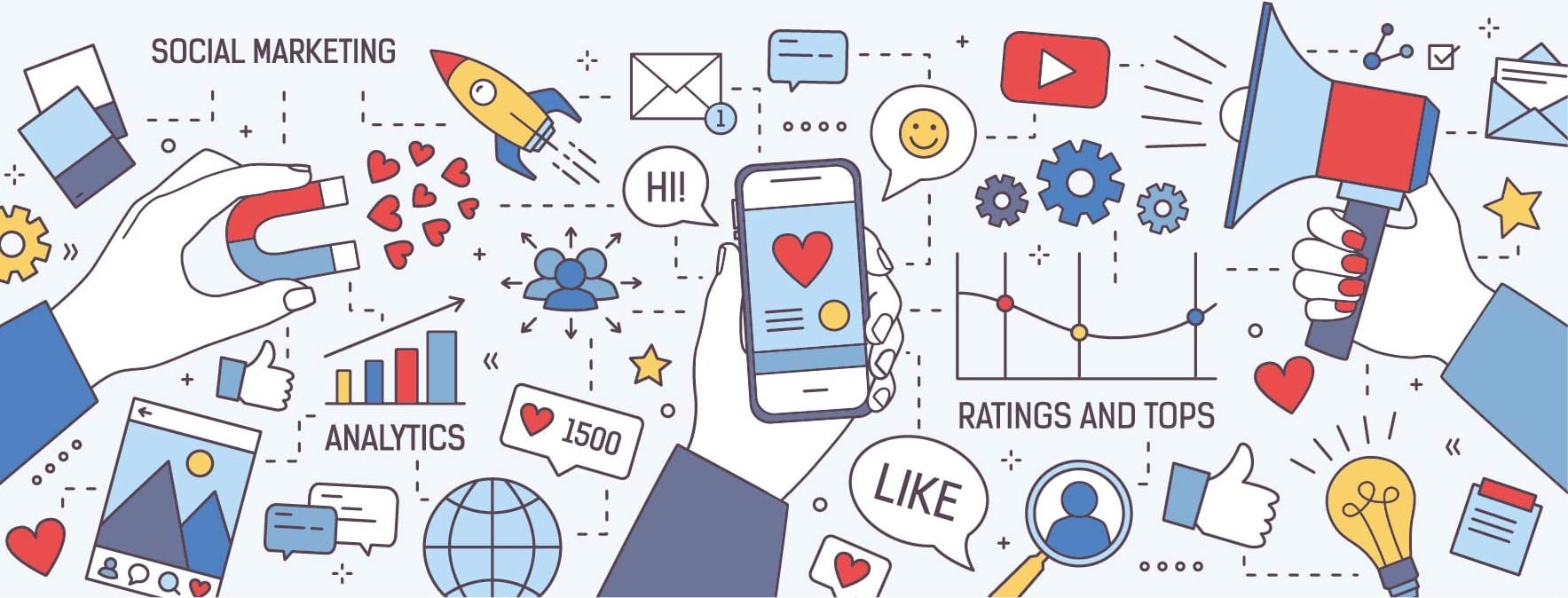
Social media can be daunting for landscape and lawn care companies, especially when you plan to start using a platform for business purposes rather than personal ones. Yet it can also be a powerful marketing tool when used effectively.
Each social media platform comes with its own nuances, benefits, downsides and audiences. Like any other form of marketing, you need to have solid goals before launching a social media campaign. What do you hope to achieve and how will posting on a specific platform help you reach that objective?
In your social media marketing plan, establish how often you plan to publish on each platform, what content you’ll post and who is your target audience on each platform. Track your engagement on each platform and make changes accordingly if you aren’t seeing progress towards your goal.
Facebook is still the most popular social media platform and 1.73 billion users visit it daily. On Facebook you can share short and long posts, photos, videos, links to your webpage or blog and even live stream. This platform is best for sharing company news, information and customer service.
Pros: The vast majority of your audience can be found on this platform.
Cons: Your organic reach is limited due to the ever-changing Facebook algorithm. Even when you pay for ads, it’s not necessarily a guarantee your post will be seen by your target audience.
How it can be used: Facebook is a platform where you can build relationships with current and past customers. If you want to provide another way for customers to get in contact with you, take advantage of Facebook Messenger to send timely responses. Facebook Live can be used to show off a finished project or hold a Q&A session with clients.
The second-most used social media platform, Instagram has 4.1 billion people use it every month. The audience on this platform tends to be younger adults. It can be used to share high-quality photos and short videos. Before and after images can be particularly effective.
Pros: This is a platform where you can show off your work and what your company is capable of.
Cons: Instagram is for perusing so it can be challenging to direct your audience to your website. The only offsite link placement Instagram allows is in your profile.
How it can be used: Taking advantage of hashtags that relate to your brand and location, you can reach a new audience. Instagram Stories allow you to add photos and videos that are viewable for 24 hours before they vanish. You can use Stories to bring attention to posts and what your company is currently working on.
Twitter has more than 330 million monthly active users. The audience on Twitter tends to be younger, more highly educated and have a higher income. Twitter is best for sharing information about your services and engaging with your audience.
Pros: Twitter is a concise and easy way to connect with your audience.
Cons: The platform is designed for sharing 280-character messages and with constant tweets, it’s easy for your message to be lost in the feed. Timing when you tweet is important.
How it can be used: You can reach a wide audience by using hashtags that interest a particular audience. Engage with other local businesses you might be able to partner with.
LinkedIn has 250 million monthly users. The audience is a good mix of those in decision-making positions and recent college graduates.
Pros: LinkedIn is the most professional of the social media platforms and it allows you to showcase your company and list any job openings.
Cons: The platform is designed more for corporate businesses rather than smaller companies. There isn’t much use for consumer-facing businesses.
How it can be used: LinkedIn can help commercial landscaping companies network and find the appropriate contact for an organization. LinkedIn can also help with finding new employees by sharing job postings and information about why someone should work for your company.
Similar to Instagram, Pinterest is another visually focused social media platform. Pinterest has more than 320 million monthly active users. The audience is predominately female. The posts tend to focus around projects, how-to-guides and ideas.
Pros: This is another site where you can present what sort of work your company is capable of. Thanks to the search function, users can find your projects with ease.
Cons: Providing enough pins for your audience to repost consistently is very time-consuming and the platform has a very niche audience.
How it can be used: Establish yourself as an expert with your quality design/build projects. Present impressive projects that will have DIYers asking you to bring their landscape ideas to life.
Regardless of which social media platforms you choose to focus on, make a point to post consistently. However, the quality of the content you post is more important than posting frequently.
If you don’t have the time or staffing to have someone dedicated to handling your social media, check out some of the various scheduling tools such as Hootsuite, Buffer, CoSchedule or Sprout Social.

